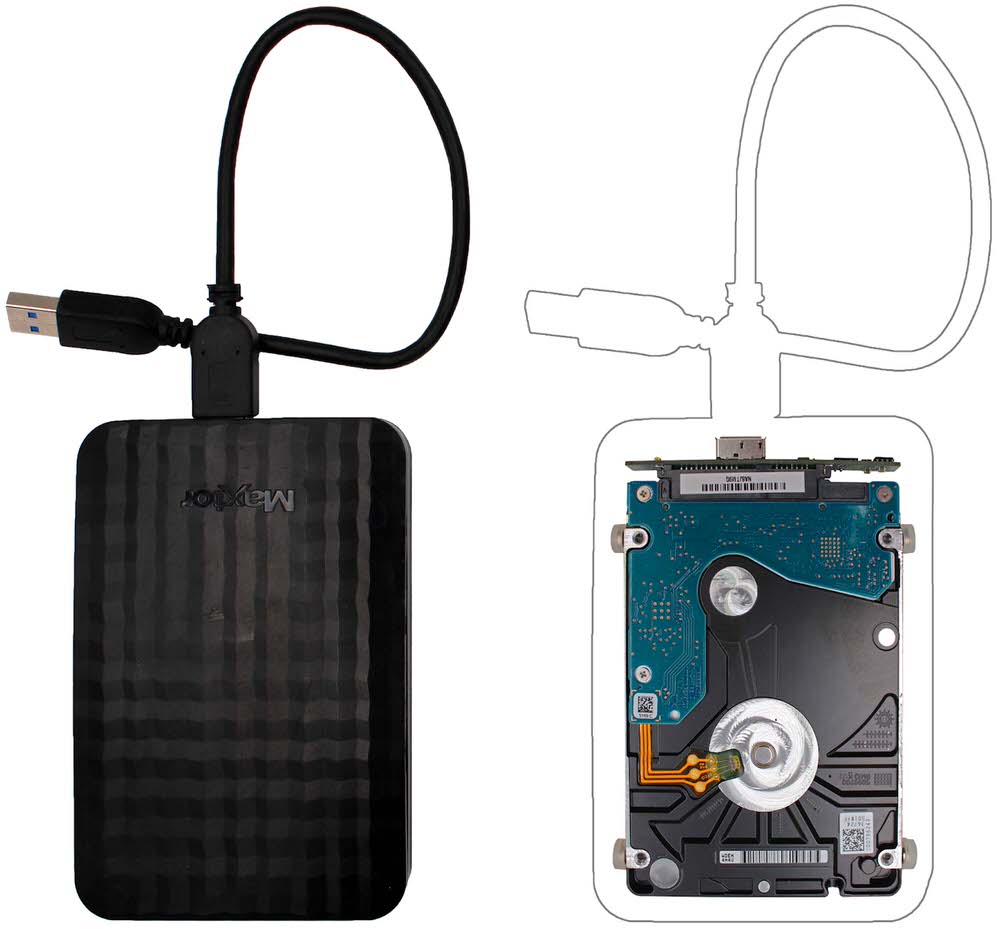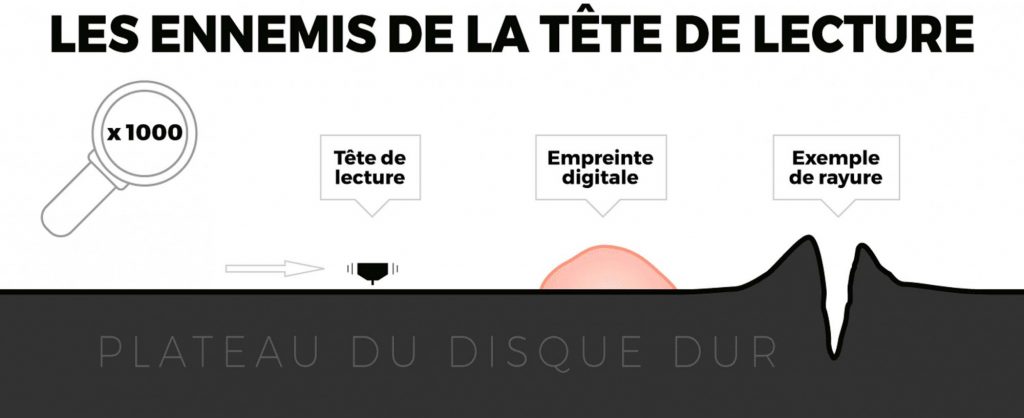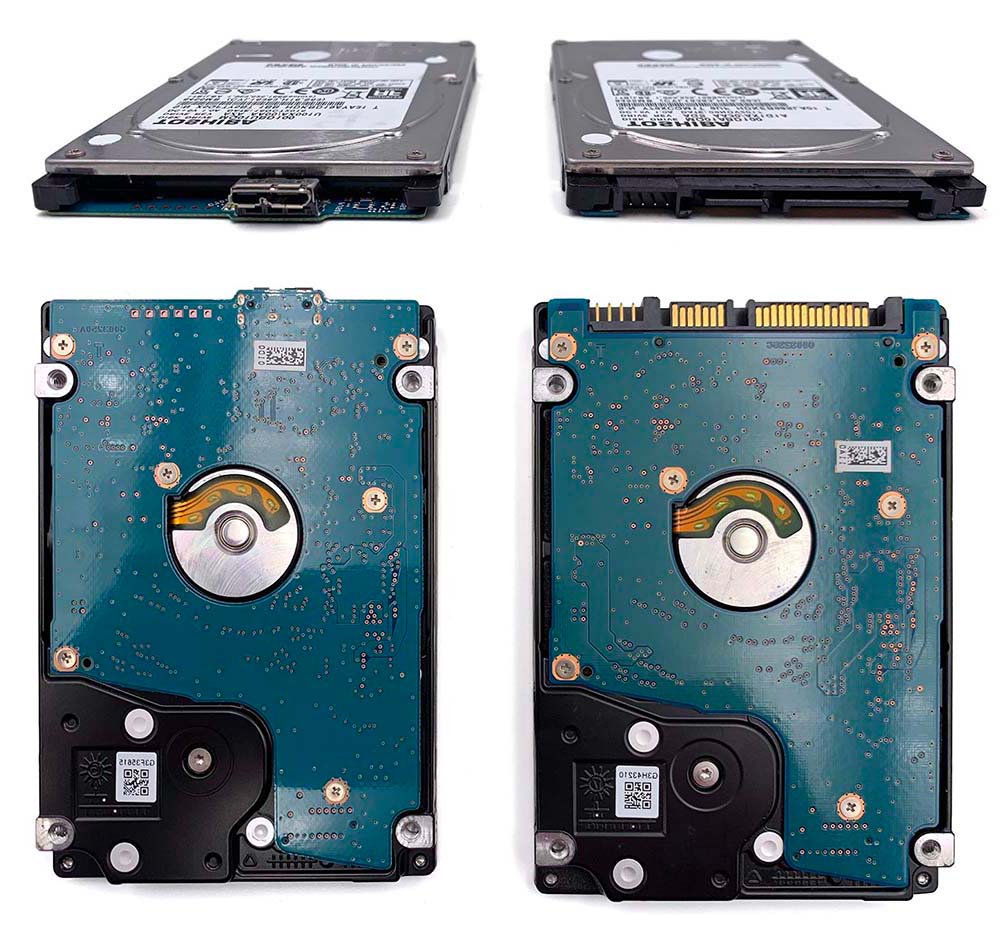Warning: Undefined variable $html in /home/clients/9ae790edf639ad4d874749fc23fa439b/sites/www.chronodisk-recuperation-de-donnees.fr/wp-content/themes/theme-chronodisk/functions.php on line 270
Repair and recovery of portable USB external hard drives.
We are recognized experts. Our engineers rely on more than 15 years of experience, tools and proprietary methods.
Your external hard drive is your daily ally to backup all types of files. Only, you are not immune from a data loss. Photos and documents can be deleted by mistake, a hard drive damaged can be defective. Whatever the reason, you need to recover data from a portable USB external hard drive. Chronodisk handles repair and recovery of portable USB external hard drives.
What is an external hard drive ?
External (USB) or portable hard drives consist of a housing containing a standard device with a USB interface adapter or a disk with built-in controller. These boxes are therefore prone to all the usual disk problems. The hard drive can be fixed (with power supply) or portable (without power supply).
2 possible formats :
- 2.5 inches (6.35 cm): these are the most common external hard drives because they are powered only by the USB cord. They are called “Laptops”.
- 3.5 inches (8.89 cm): they have a power supply in addition to USB and the storage capacity is generally larger than 2.5 inches. They are called “Desktop” or “Desktop”.
This type of record meets some fragilities:
When the portable external hard drives fall or if they suffer a shock, it systematically causes a mechanical fault especially when it is in operation. The device emits a tic tac on the next power up. It is possible to repair and recover lost files and data from external hard drives with such defects once the exact defect has been determined and the device has been properly repaired.

Furthermore, the portable hard drives tend to overheat. This is due to inadequate external housing ventilation. A small number of devices may contain a fan inside the actual housing to combat temperature buildup.Whatever the nature of the failure, we bring suitable solutions to Chronodisk to recover deleted files.
Now start data recovery
Request your free scan and schedule the free removal of your support
What type of failure for your external hard drive ?
Several situations can lead to repair and recovery files on a damaged media. Whether internal or external, the hard drive has mechanical parts. The latter are very sensitive to many factors: vibrations, falls, flooding, temperature variations, etc.
When we talk about the failure of this type of media, we can classify them in 3 types : logical failure, electrical failure and mechanical failure.
Logical failure
The logical failure is the least severe of all external hard drive failures. The storage system usually works normally, but you can’t access your data.
This failure is usually caused by the presence of viruses in the software, excessive accidental formatting, malware, partitioning, unexpected deletion of files, etc.
Electrical failure
In the case of an electronic failure, the disk is inert and emits no noise. This failure is frequently caused by an abnormally high electrical voltage or by the failure of an electronic component.
Sound of a functional hard drive :
Mechanical failure
Concerning the mechanical failure of an intern hard drive, it occurs when the media is subject to :
- shocks
- falls
- high temperature variations
- wear and tear
- flood or fire, etc.
Voici les sons symptomatiques de la panne mécanique :
Defective heads
70 % success rate
Sounds from most to least common
Il se manifeste par des claquements (aller retour du bras de la tete de lecture) ou des bips
Heads do not respond
60% success rate
There is no head movement and the engine shuts down (Western digital)
Scratched trays
30 % success rate
This high-pitched hiss usually signals scratches on the disk tray(s) that prevent read/write heads from processing stored data.
Stuck engine
90% success rate
A buzzing or snapping from your hard drive may indicate a blocked or damaged pin motor.
Broken trays
0 % success rate
The glass tray is broken into pieces. In this case, all the mechanical features of the device are damaged.
Repair and recovery of data on an external hard drive : Our process in 5 stages
Lorsque vous confiez votre appareil pour réparation et récupération de données, nous suivons un process en cinq étapes :
- Receiving your external hard drive: acknowledgement
- Diagnosis: We assess the damage and make a diagnostic report to find out if your data is recoverable or not with the list of recoverable data.
- Data extraction.
- Copy the data to a new hard drive.
- Return of the disk.
Why choose Chronodisk ?
The hard drive is the specialty of Chronodisk.This is the area where we have the most experience. The hard drive represents 80 % of our activity against 15 % for the SSD. The technology and processes repair and data recovery have been proven since 2003 and the concentration of manufacturers (there are only three manufacturers left in the world) which facilitates the task of research and development.
We have the largest stock of spare parts in Paris (nearly 20 000 discs.).
Our two clean rooms and all of our equipment allow us to process a large volume of files simultaneously. We can also deal with data repair and recovery emergencies.
We are recognized experts. Our technicians rely on more than 15 years of experience, proprietary tools and methods.
Now start data recovery
Request your free scan and schedule the free removal of your support
Expert opinion: some technical difficulties on hard drives
Operating Shock:
The engine of a disc rotates at 5400 rpm, or even 7200 rpm. The heads are very close to the trays to increase the density of information. The slightest shock can create impacts, even scratches.

Scratch :
The slightest scratch on the disc can be fatal. The trays are made of aluminum or glass. The head flies over at 2 nanometers and the scratch has created overflows of material that are fatal for the reading heads. Sometimes, we can disable heads and read out non-insulated surfaces.
Tutorials:
change of electronic card (you have to find the same card and the cards are serialized since 2005 so it doesn’t work anymore) or open the hard drive and change the read head (without a clean room that prevents dust, it’s a bit like Russian roulette), put it in the fridge one night (a beautiful urban legend, if it were so simple…)
Switching from USB to SATA:
Our tools are historically better suited to SATA and low-level accesses are less efficient in USB. This is therefore the first mission of the engineer: to pass the USB disk in SATA. He has to solder wires on the electronic board to perform the manipulation and on the last generations of cards this does not work. We need to modify SATA cards to make them compatible.
Encryption:
The disks encrypt the data natively. This is fine for confidentiality in case of recycling, but it complicates our life for repair and recovery














